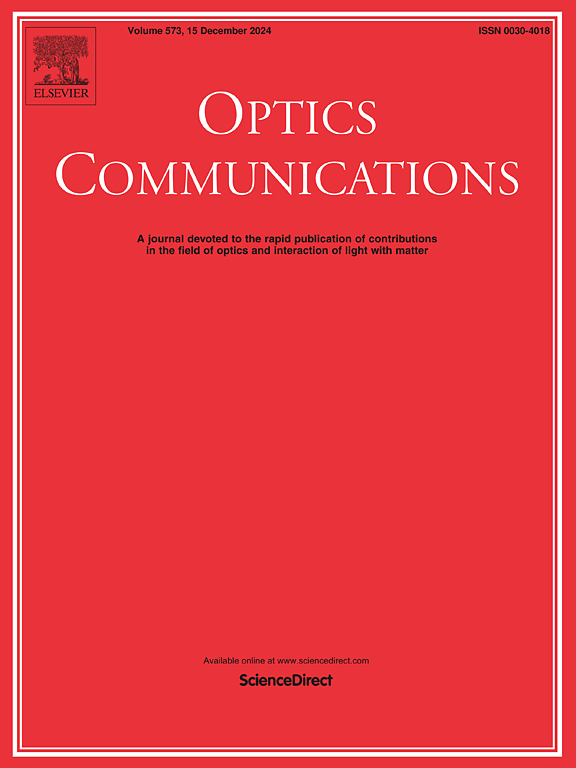基于椭圆拟合算法的 3×3 耦合器相位解调共模强度噪声抑制方案
IF 2.2
3区 物理与天体物理
Q2 OPTICS
引用次数: 0
摘要
针对 3 × 3 耦合器相位解调方案中的光源强度噪声问题,本文提出了一种基于椭圆拟合算法(EFA)的差分信号共模强度噪声抑制方案。该方案利用 EFA 修正 3 × 3 耦合器输出的三个干扰信号的直流(DC)分量。选择其中一个干扰信号作为自参考信号,然后将另外两个干扰信号减去自参考信号,得到差分信号。这样可以在解调前有效消除干扰信号直流分量中的共模强度噪声,防止噪声混入解调结果。然后,将 EFA 和 ATAN 应用于两个差分信号的信号解调。实验结果表明,与 EFA 解调方案相比,系统的本底噪声平均降低了 18 dB,最大降低了 26 dB,在 50 kHz 时为 1.58 μrad/√Hz,总谐波失真(THD)小于 1%。本文章由计算机程序翻译,如有差异,请以英文原文为准。
Common-mode intensity noise suppression scheme in phase demodulation of 3×3 coupler based on ellipse fitting algorithm
Addressing the issue of light source intensity noise in the phase demodulation scheme of the 3 × 3 coupler, this paper proposes a common mode intensity noise suppression scheme for differential signals based on the Ellipse Fitting Algorithm (EFA). This scheme employs the EFA to correct the direct current (DC) components of the three interference signals output by the 3 × 3 coupler. One of the interference signals is selected as a self-reference signal, and the other two interference signals are then subtracted the self-reference signal to obtain differential signals. This effectively eliminates the common-mode intensity noise in the DC components of the interference signals before demodulation, preventing noise from being aliased into the demodulation results. Then, the EFA and ATAN are applied to the two differential signals for signal demodulation. Experimental results show that, compared with the EFA demodulation scheme, the noise floor of the system is reduced by an average of 18 dB, with a maximum reduction of 26 dB to 1.58 μrad/√Hz at 50 kHz, and the total harmonic distortion (THD) is less than 1%.
求助全文
通过发布文献求助,成功后即可免费获取论文全文。
去求助
来源期刊

Optics Communications
物理-光学
CiteScore
5.10
自引率
8.30%
发文量
681
审稿时长
38 days
期刊介绍:
Optics Communications invites original and timely contributions containing new results in various fields of optics and photonics. The journal considers theoretical and experimental research in areas ranging from the fundamental properties of light to technological applications. Topics covered include classical and quantum optics, optical physics and light-matter interactions, lasers, imaging, guided-wave optics and optical information processing. Manuscripts should offer clear evidence of novelty and significance. Papers concentrating on mathematical and computational issues, with limited connection to optics, are not suitable for publication in the Journal. Similarly, small technical advances, or papers concerned only with engineering applications or issues of materials science fall outside the journal scope.
 求助内容:
求助内容: 应助结果提醒方式:
应助结果提醒方式:


